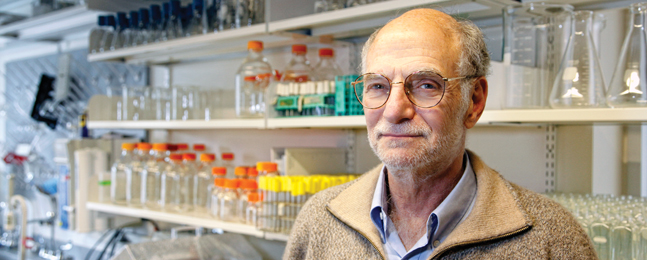No Rest for the Scientist of Circadian Rhythms

Mike Lovett
Michael Rosbash
Biologist Michael Rosbash continues to rack up accolades for his groundbreaking research into what makes the fruit fly — and humans — tick.
The 2013 Wiley Prize in Biomedical Sciences is the fifth major award to recognize Rosbash’s research contributions (and is, moreover, a frequent Nobel precursor). He shares the prize with his longtime Brandeis collaborator and friend, Jeffrey Hall, now emeritus professor, and Michael Young of Rockefeller University.
Over more than three decades, Rosbash has studied circadian rhythms, the built-in biological clock that governs functions such as sleep, wakefulness and metabolism in organisms as simple as fruit flies and as complex as humans. In the process, Rosbash and his colleagues have brought to light fundamental insights into physical health and disease, mental illness, and sleep disorders. These discoveries may lead to the development of drugs to treat sleep disorders, physical and mental illness, and even jet lag.
“We were incredibly fortunate to have advanced this problem in the remarkable way things have turned out,” says Rosbash, who is also an investigator with the Howard Hughes Medical Institute. “Jeff and I, as well as Mike Young at Rockefeller, began these studies in the fruit fly with no certainty — in my case, no expectation — that the fly clockworks would be conserved in humans. So our work not only turned out interesting but also potentially important. How lucky can three guys get?”
In 1984, Rosbash and Hall cloned the first circadian clock gene in the fruit fly Drosophila. Their remarkably fruitful partnership lasted until 2007, when Hall retired.
Rosbash continues to refine his research, which is now focused on understanding in mechanistic detail how the fruit fly’s circadian timing occurs and how circadian gene expression is regulated. His lab is also studying which neural circuits are involved in circadian timekeeping and how individual circadian neurons function.
